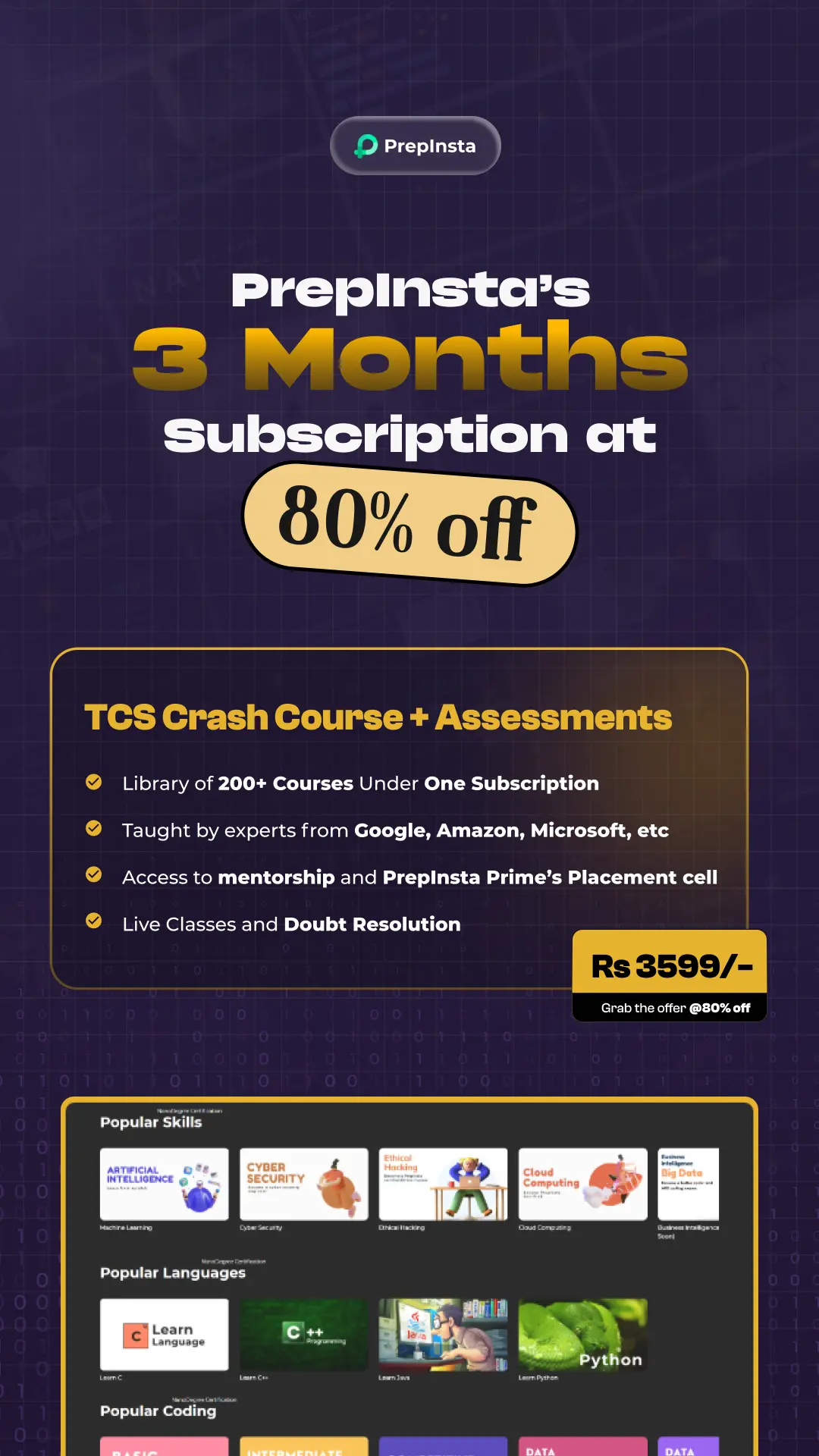AMCAT Reading Comprehension Quiz-1
Related Banners
Check out our instagram

PrepInsta Prime
Get over 200+ course One Subscription
Courses like AI/ML, Cloud Computing, Ethical Hacking, C, C++, Java, Python, DSA (All Languages), Competitive Coding (All Languages), TCS, Infosys, Wipro, Amazon, DBMS, SQL and others.

PrepInsta Prime
Get over 200+ course One Subscription
Courses like AI/ML, Cloud Computing, Ethical Hacking, C, C++, Java, Python, DSA (All Languages), Competitive Coding (All Languages), TCS, Infosys, Wipro, Amazon, DBMS, SQL and others.
Get PrepInsta Prime Subscription
Get access to all the courses that PrepInsta offers, check the out below -
Companies
TCS, Cognizant, Delloite, Infosys, Wipro, CoCubes, KPMG, Amazone, ZS Associates, Accenture, Congnizant & other 50+ companies
Programming
Data Structures, Top 500 Codes, C, C++, Java Python & other 10+ subjects
Skills
Full Stack Web Development, Data Science, Machine Learning, AWS Cloud, & other 10+ skills and 20+ projects
Companies
TCS, Cognizant, Delloite, Infosys, Wipro, CoCubes, KPMG, Amazone, ZS Associates, Accenture, Congnizant & other 50+ companies
Programming
TCS, Cognizant, Delloite, Infosys, Wipro, CoCubes, KPMG, Amazone, ZS Associates, Accenture, Congnizant & other 50+ companies
Skills
TCS, Cognizant, Delloite, Infosys, Wipro, CoCubes, KPMG, Amazone, ZS Associates, Accenture, Congnizant & other 50+ companies

 0
0






 Instagram
Instagram Whatsapp
Whatsapp Telegram
Telegram Linkedin
Linkedin







Login/Signup to comment